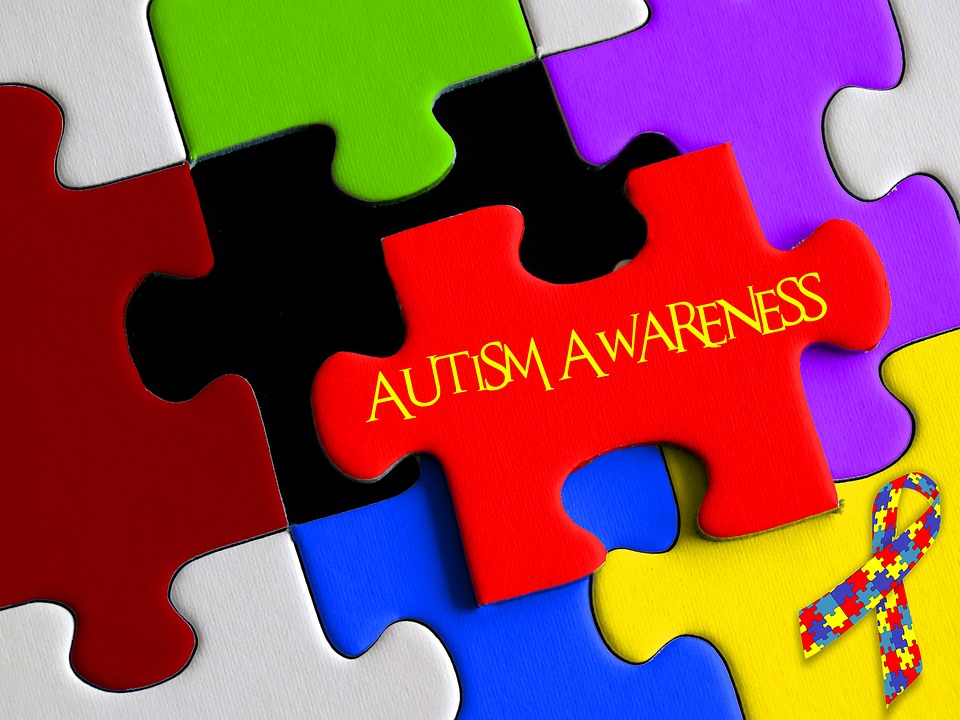Autism spectrum disorder is not recognized as a rare condition, with 1 in 55 Maryland children receiving an ASD diagnosis early on in their lives. In fact, Maryland has the second highest rates of autism spectrum disorder in the country, likely due to an increase in physician awareness of the signs of ASD. Despite this prevalence, and a growing body of resources for Maryland families, ASD is still frequently misunderstood by those outside of the ASD community. The many myths surrounding a diagnosis of autism is damaging to children and families. Let’s take a closer look at some of the more common myths regarding ASD:
Myth 1: ASD Almost Never or Rarely Affects Girls
It’s become common knowledge that ASD is more common in boys than in girls, with 5 boys being diagnosed with the condition for every one girl, according to the CDC.(1) What isn’t common knowledge, however, is that this data difference is likely not because autism spectrum disorder is particularly uncommon in girls. Instead, it is thought that girls express the signs and symptoms of ASD and other neurobehavioral disorders differently than boys.
Girls are more likely to have subtle or “gender expected” signs that “fly under the radar” when compared to boys. Girls considered to have less severe ASD features seem to be more likely to try to hide their differences in order to fit in with the people around them. They are also less likely to be diagnosed simply because it was for so long assumed that girls rarely have ASD. Families of girls with autism spectrum disorder often report that it took years for their daughters to be diagnosed with ASD.(1)
Numerous studies of ASD diagnoses have confirmed that boys and girls exhibiting the same traits are not diagnosed at the same rate. Instead, girls regularly have to demonstrate extreme behavior or learning problems to be diagnosed at an early age. Because of this, those girls with subtler ASD features are typically diagnosed with seemingly similar conditions (like OCD or even eating disorders), or they are diagnosed at older ages than boys.1 Some girls are thought to never be diagnosed with ASD at all, instead assuming themselves to be “odd” or “different.” (1) This has a negative impact on the child’s self-esteem, relationships, and educational experiences.
Receiving a proper ASD diagnosis can be empowering and clarifying. As well, early intervention can be life-changing for children with ASD. Early intervention allows children to grow into more successful, comfortable adults. Recognizing that girls tend to exhibit ASD differently and properly screening girls for autism spectrum disorder is crucial to their wellbeing.
Myth 2: Individuals with ASD Cannot Communicate
Autism spectrum disorder affects everyone differently. While it is certainly true that some children and adults with ASD are referred to as “non-verbal,” it is also true that these individuals can still each communicate in their own way. Early intervention and other therapy programs can help children with autism spectrum disorder learn ways to communicate in a way that suits them. These days, there are also a variety of technological options to help individuals with ASD express their thoughts and needs, such as keyboard devices or picture cards.
Myth 3: All Children and Adults with ASD Have IQs That Differ from the General Population
Myths regarding the intellectual abilities of people with autism spectrum disorder are especially damaging. Children and adults with ASD are often assumed to have extremely high, “superpower” level IQs or extremely low IQs. The truth is that children and adults with ASD don’t actually seem to be that different intellectually from people without ASD.(2)
Just as in the general population, there are people with ASD who are extremely gifted in key intellectual areas and there are people with ASD who do have specific learning disabilities. However, some studies have shown that people with autism spectrum disorder and related differences may be more likely to think in a unique and creative way.(3) That being said, because of the communication difficulties involved, it isn’t easy to standardize IQ tests for individuals with autism spectrum disorder.(4)
It’s best not to approach a person who has ASD with any kind of stereotype about their intellect. Instead, let the individual person show you their own special and unique capabilities.
Myth 4: People with Autism Do Not Experience Emotions
A person with autism spectrum disorder experiences the full range of human emotion, but the communication differences associated with ASD usually makes expressing these emotions difficult. In studies, people with ASD are also usually shown to experience empathy just like anyone else.(5) The ability to express those emotions and empathetic feelings is another important part of development that can be guided through therapies.
Myth 5: You Can Outgrow ASD
When people talk about ASD, they are usually referring to children with autism. But, ASD isn’t something that children ever outgrow. Autism spectrum disorder lasts a lifetime. Unfortunately, because of the strong association with ASD and childhood, support and resources for adults with autism spectrum disorder is an often overlooked topic.
Myth 6: Autism Is a 21st Century Condition or a Growing Epidemic
We regularly hear of the rising rate of autism spectrum disorder. While no one knows exactly what triggers ASD, and environmental changes can’t be ruled out, it is thought that the rate of autism spectrum disorder has actually been the same for decades. Instead, more awareness among physicians and families of the signs of ASD seems to be leading to greater diagnoses in children with even milder autism spectrum disorder who would have been overlooked in the 1980s, 1970s, or beyond.(6)
Myth 7: Individuals with Autism Can’t Form Close or Loving Relationships
Similar to the myth about emotions, children and adults with autism do form close relationships. Many even crave those relationships with others, but don’t know how to form them. This is another benefit of intervention programs, as well as school awareness programs, like Sesame Street’s autism initiative.(7)
Myth 8: Adults with Autism Cannot Attend College or Have Careers
People with ASD can and do attend college, hold careers, even fall in love and raise children of their own. It is most important to remember that every person with autism is an individual. No two people with autism are alike. Some people with ASD will need more assistance than others throughout their lives, but all people with autism spectrum disorder are capable of living rich and fulfilling lives.
Concerned about autism spectrum disorder? Are you looking for a comprehensive way to understand your child’s neurobehavioral needs? We offer neuropsychological assessments that will guide you toward the right resources for your child’s success. Contact us at our Columbia location today to schedule an appointment or for more information on how we can help serve your family.
Resources:
- Szalavitz, M. (2016, March 01). Autism–It’s Different in Girls. Retrieved July 15, 2019, from https://www.scientificamerican.com/article/autism-it-s-different-in-girls/
- Charman, T., Pickles, A., Simonoff, E., Chandler, S., Loucas, T., & Baird, G. (2011, March). IQ in children with autism spectrum disorders: Data from the Special Needs and Autism Project (SNAP). Retrieved July 15, 2019, from https://www.ncbi.nlm.nih.gov/pubmed/21272389
- McVeigh, T. (2015, August 22). People with autism and learning disabilities excel in creative thinking, study shows. Retrieved July 15, 2019, from https://www.theguardian.com/society/2015/aug/22/autism-creative-thinking-study
- Is Autism Associated with Higher Intelligence? (n.d.). Retrieved July 15, 2019, from https://www.appliedbehavioranalysisedu.org/is-autism-associated-with-higher-intelligence/
- Bird, G., & Cook, R. (2013, July 23). Mixed emotions: The contribution of alexithymia to the emotional symptoms of autism. Retrieved July 15, 2019, from https://www.ncbi.nlm.nih.gov/pmc/articles/PMC3731793/
- Wright, J. (2017, March 03). The Real Reasons Autism Rates Are Up in the U.S. Retrieved July 15, 2019, from https://www.scientificamerican.com/article/the-real-reasons-autism-rates-are-up-in-the-u-s/
- Resources for Parents. (n.d.). Retrieved July 15, 2019, from https://autism.sesamestreet.org/






